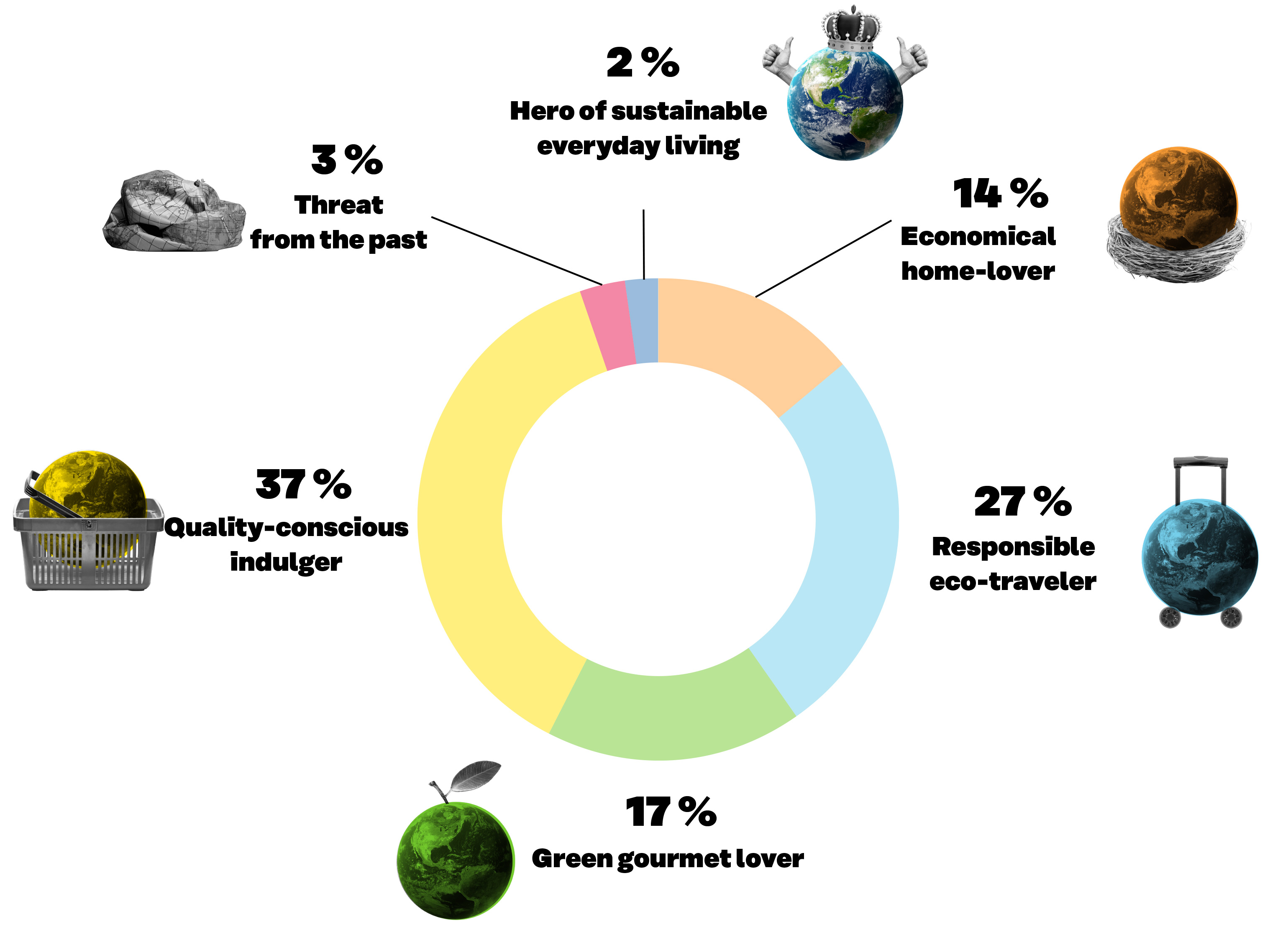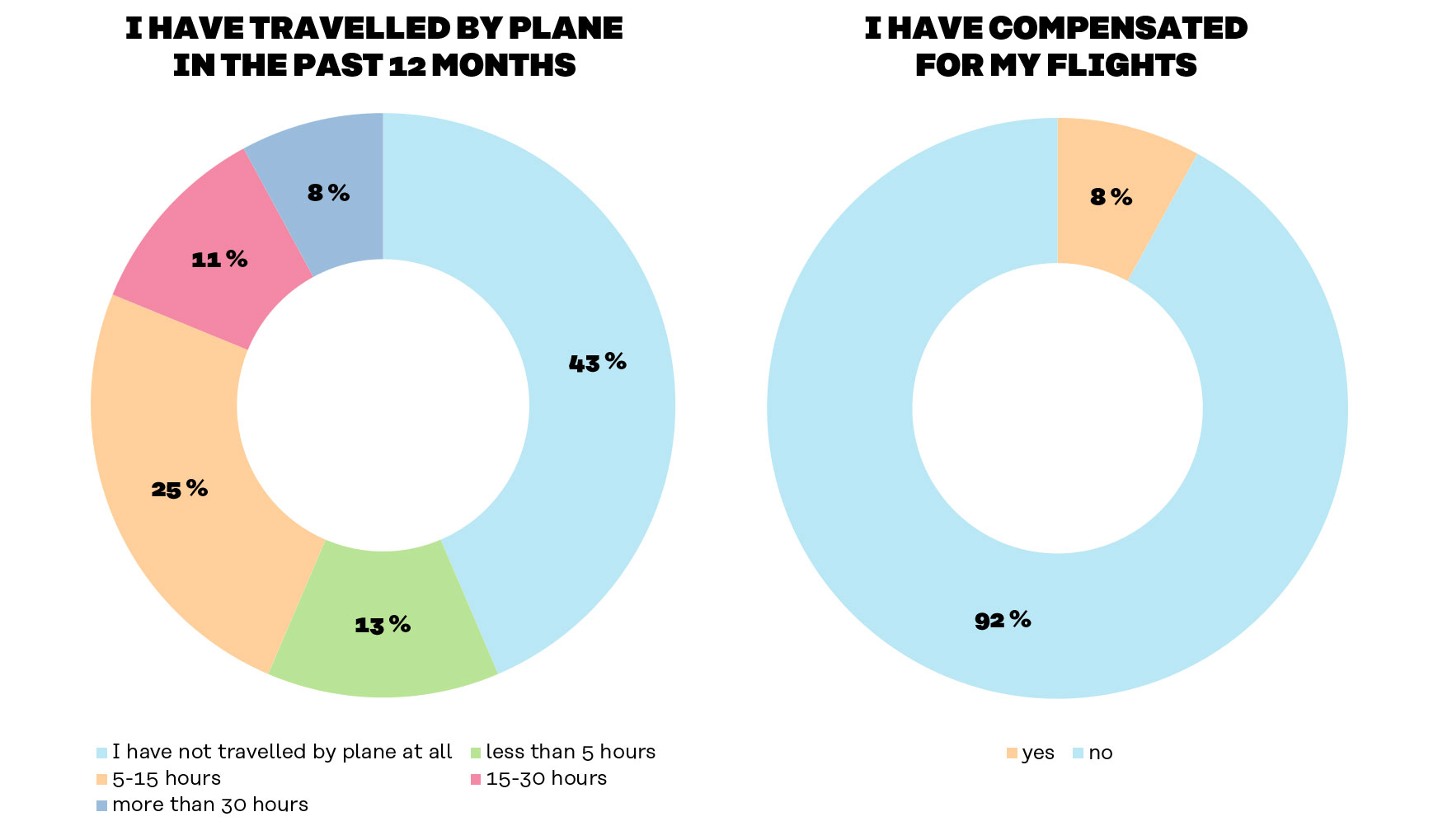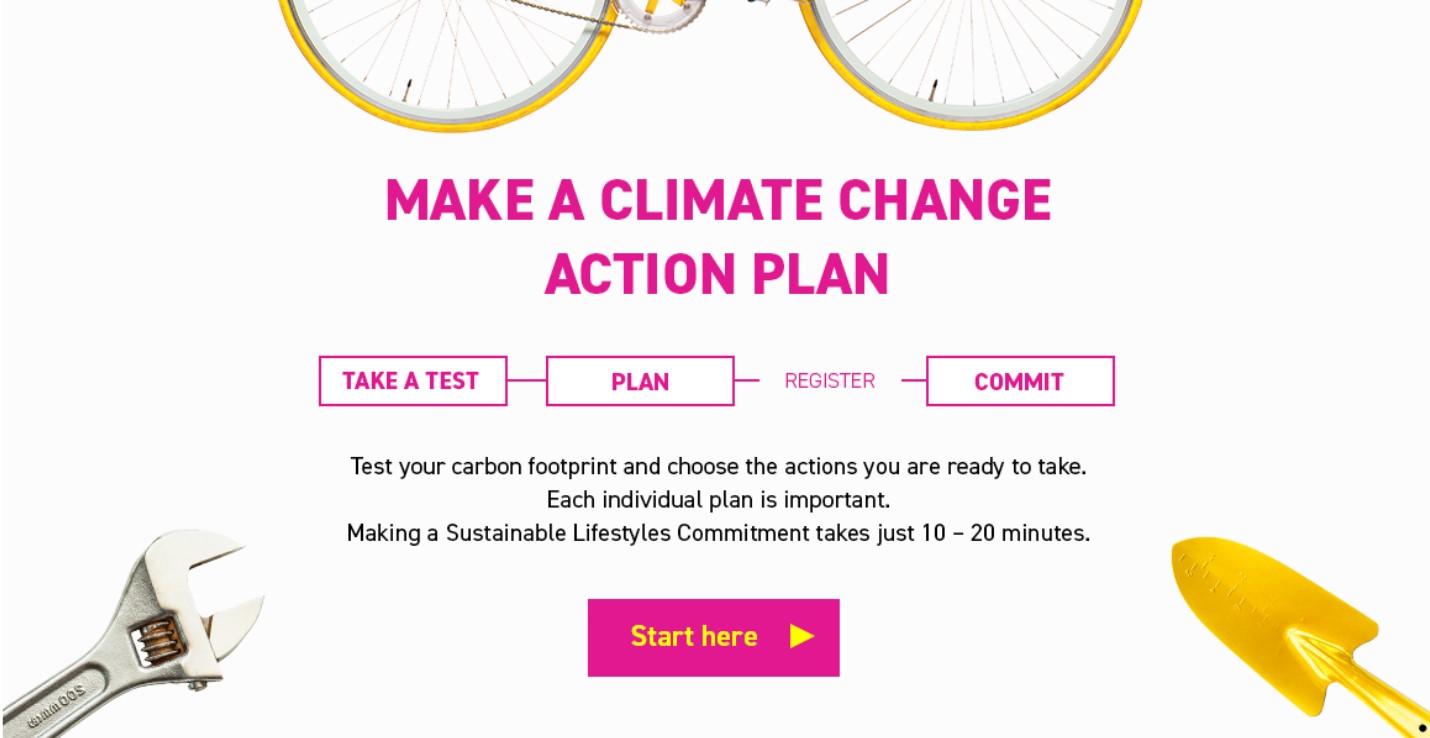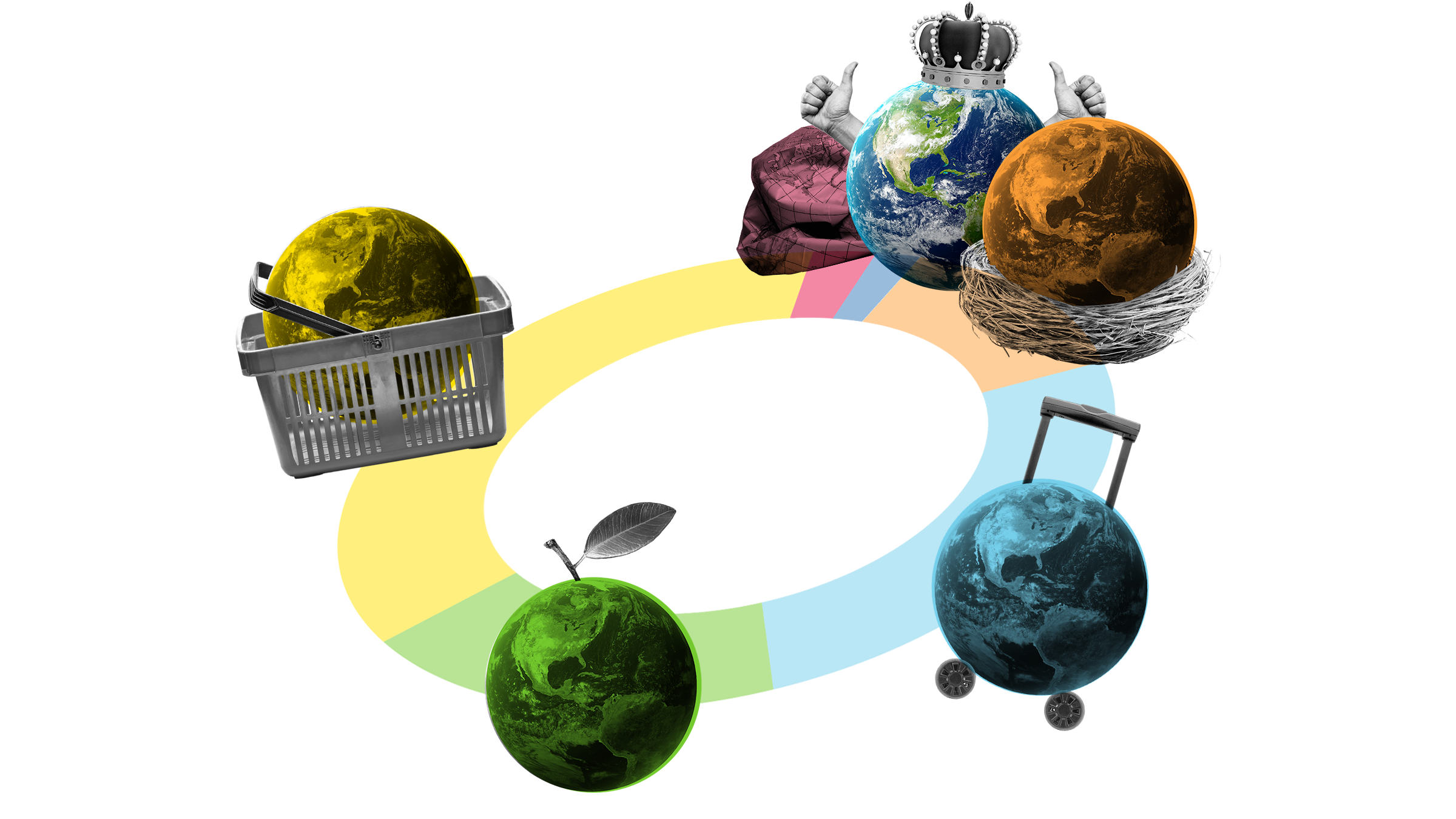Sitra’s Lifestyle Test has already been taken more than 870,000 times. And using the Commitment2050 service from the Prime Minister’s Office, more than 1,500 Finns have already submitted their own plans for reducing their carbon footprint.
After the publication of the IPCC’s report in autumn 2018, hundreds of thousands of Finns started to find out what kind of impact their lifestyle had on the climate and what each of us can do to cut down greenhouse gas emissions. Sitra’s Lifestyle Test and 100 Smart Ways were created in 2017 as a response to the acute need for information caused by climate change. By answering the 27 questions in the test, respondents can find out their carbon footprint and reflect on what kind of action they are prepared to take to mitigate climate change.
By taking the test and familiarising themselves with the selection of measures, hundreds of thousands of Finns have contributed to an analysis of how our lifestyle burdens nature and of what kinds of more sustainable everyday actions we are interested in.

The carbon footprint of the average Finn is approximately 10,300 kg CO2e. However, those that took the test are on average more informed and produce smaller emissions, because their average carbon footprint is approximately 7,300 kg CO2e. To be able to prevent the rise in the global temperature exceeding the target of 1.5 degrees, we should reduce our carbon footprint to about 2,500 kg CO2e by 2030. Only a few per cent of those who took the test belong to the everyday heroes whose footprint is already less than three tonnes.
According to a study conducted by the Finnish Environment Institute SYKE, housing makes up about one third of our carbon footprint, and food and transport about one fifth each. A quarter of our personal emissions are caused by other consumption, such as goods and services.
An examination of the results explains why the emissions of those who took the test are smaller than average
About one third of those who tested their carbon footprint use ecological electricity. One in four also use electricity to heat their home, but the largest proportion (42%) use district heating. One in three drive, but most of them less than 100 kilometres per month. It is therefore surprising that as many as a half do not use public transport at all.
Only one per cent of the respondents use a car that runs on gas or electricity. By far the largest proportion use cars running or petrol (61%) and one third on diesel.
Many of those who took the test have commented on social media about the relatively large carbon footprint of transport, especially if they have flown abroad several times during the past twelve months. There are different types of air travellers, and about 44% of the respondents have not flown at all in the past twelve months. Compensating for one’s trips slightly reduces the carbon footprint in the test, but only very few have compensated for the emissions of their flights.

The majority of the respondents regularly eat meat and dairy products. Only one in ten already follow a vegetarian or vegan diet. Almost everyone avoids wasting food.
The most popular content on the 100 Smart Ways pages that people browsed after the test results is that concerning a larger climate impact. For example, respondents are interested in knowing how to save money by optimising the energy consumption of their homes, how to replace unnecessary air travel with some other form of transport or remote connections, how to adopt a vegetarian diet, enter the second-hand market and replace goods with services.
Sounds interesting and practical, doesn’t it? For example, general discussion on the topic on social media reveals that most are also prepared to take action to reduce emissions. But are voluntary actions enough to achieve the climate targets?
A target without a plan is only a dream
As more and more people in Finland know the size of their carbon footprint, why should they not also find out about what kinds of plans they are prepared to make to reduce their footprint? Towards the end of 2018, we made Sitra’s Lifestyle Test and 100 Smart Ways a part of the Commitment2050 service from the Prime Minister’s Office. The website that has served companies, municipalities and communities since 2014 has collected hundreds of binding plans for more sustainable operating practices. The Commitment2050 service is used to implement the 2030 Agenda for sustainable development in Finland.

As of 10 December 2018, individuals have been able to submit personal carbon footprint plans to the Commitment2050 service. By examining these plans, we can also better analyse what kind of practical climate measures people are prepared to take in Finland. Many of us know that we will have to change our lifestyle so that we can ensure a clean and safe future for the forthcoming generations. After all, as much as 68 per cent of consumption-based greenhouse gas emissions are caused by us, five and a half million Finns.
When we know our own starting level – the size of our carbon footprint – and which of our habits burden climate most, the next step will be easier to take. Commitment2050 is above all an easy planning and monitoring tool for setting and adhering to a personal emissions reduction target. Publishing one’s own targets often creates positive pressure that helps to achieve the targets. A personal plan may also set an example for others, or perhaps inspire them to join in – even the most sceptical.
Over a thousand drops can make an ocean
We had a closer look at the 1,500 plans and the motivations and practical measures recorded in them. The plans and the attached comments reveal that carbon footprint plans do not always spring from inspiration and a motivation to learn something new. Many people are concerned about the carrying capacity of our planet and the living conditions of future generations in our impoverished biosphere. Commitment to measures and creating a plan is also seen as a way of alleviating climate anxiety. However, what all of the plans have in common is the view that we should always do our bit.
“I hope my example will help me bring my children up to be responsible consumers who base their values and what they see as important in life on something other than goods.”
– A plan from Siilinjärvi, aimed at a carbon footprint of 3,400 kg
Finnish people from Hanko to Utsjoki and from Vaasa to Joensuu have made plans for a more sustainable everyday life. Plans have been actively created especially in the urban centres of Uusimaa and Pirkanmaa. It is also possible for expatriate Finns to make a plan of their own, although it must be borne in mind that the environmental calculations in the service are based on data and assumptions applying to Finland. You can familiarise yourself with the commitments at sitoumus2050.fi/en/selaa-sitoumuksia#/. Just under a third of the plans have been created only for personal use.

The average carbon footprint of those who have submitted a commitment is about 6,500 CO2e and they are aiming to reduce their carbon footprint on average by 20 per cent in twelve months. The National Medium-term Climate Policy Plan encourages cuts of about 50 per cent in consumption-based emissions. One in ten participants have placed their target below 3,000 kg CO2e and will strive to achieve it on average by the end of 2020. To really achieve the targets, all of us should also have a suitable plan for our daily life and equal opportunities to realise the plan.
Those Finns who have already drawn up their plan are already relatively experienced in quite a few areas of sustainable everyday life. The plans show that the presents they prefer to give are time or something that is really needed. They use their own shopping bags and water bottles and more than half of those who have made a commitment already consider themselves to be meticulous recyclers of waste. They get exercise by walking to the library as well as to the nearest forest. They are already used to having days when they eat vegetarian food and prefer to vote for politicians that have sustainable views. Small actions make big waves, and these measures are easy for everyone to take.
There is no single way to reduce carbon footprints
The basic routines of sustainable everyday life are already being managed well, but how can improvements be made to make daily life even more sustainable? Carbon footprints will be reduced when attention is paid to the following activities repeated in the plans: many people have not yet had enough practice to check whether they are using too much energy for heating or to monitor their consumption of electricity, let alone to consider whether too much hot water is being wasted.
There is also interest in changing dietary habits: one in three people intend to participate in vegan challenges or even adopt a fully plant-based diet. At least one in four people will eat more Finnish food, such as freshwater fish and potatoes, as an alternative to rice and imported meat. Finns also find buying products with a red reduced-price label meaningful, as it doubles the ecological benefit: it is both economical and ecological. Likewise, there is a determination to make consumption more sensible by having old, good-quality products repaired. People are also interested in the KonMari method, which is designed to reduce the amount of clutter hoarded in homes. On average, people want to adopt such acts as part of their daily life within just over a year, which is actually what the service automatically proposes.
“The intention is not to give up everything, just to be more reasonable with everything.”
– A participant from Orimattila, aiming for a carbon footprint of 4,600 kg
For many, making a plan may mean the start of a big change in their life, which means that they have also allowed more time for implementing the plan. Actions with significant climate effects often require financial investments and people are cautious when committing to them. Some will have to replace the heating system at home or move to a smaller apartment in a few years’ time. Some others, on the other hand, know they will be changing their car within the next few years and a small but increasing group is interested in having a vehicle that uses electricity, gas or bioethanol.
More and more people are interested in low-carbon transport alternatives. One in five Finns intend to give up flying for at least a year. One in six people intend to travel more by train instead and combine their trips more smartly in future – in other words, travel for longer at a time. However, travelling by observing sharing economy principles has still not convinced Finns. Only a handful of those who submitted a plan found shared cars, shared home accommodation or renting out one’s own summer cottage a suitable alternative.
From words to action
If the measures planned by one thousand of the participants are realised, the emission savings will total 1,467,800 kg CO2e. What if as many as one million Finns strived to reduce their carbon footprint by a fifth?
“I really want to commit myself to these targets and I believe many others do too, but we need our town to support us in realising these targets and to make it easier to achieve them.”
– A participant from Pieksämäki, aiming for a carbon footprint of 5,300 kg
However, the will of individuals alone will not be enough to reach the shared emission targets. Every sector of society must take action. A good life within the confines of the planet’s natural limits requires reciprocity between our daily choices, companies and decision-makers. How can you contribute to setting more ambitious personal targets so that we can start a proper emission reduction campaign?

















Recommended
Have some more.